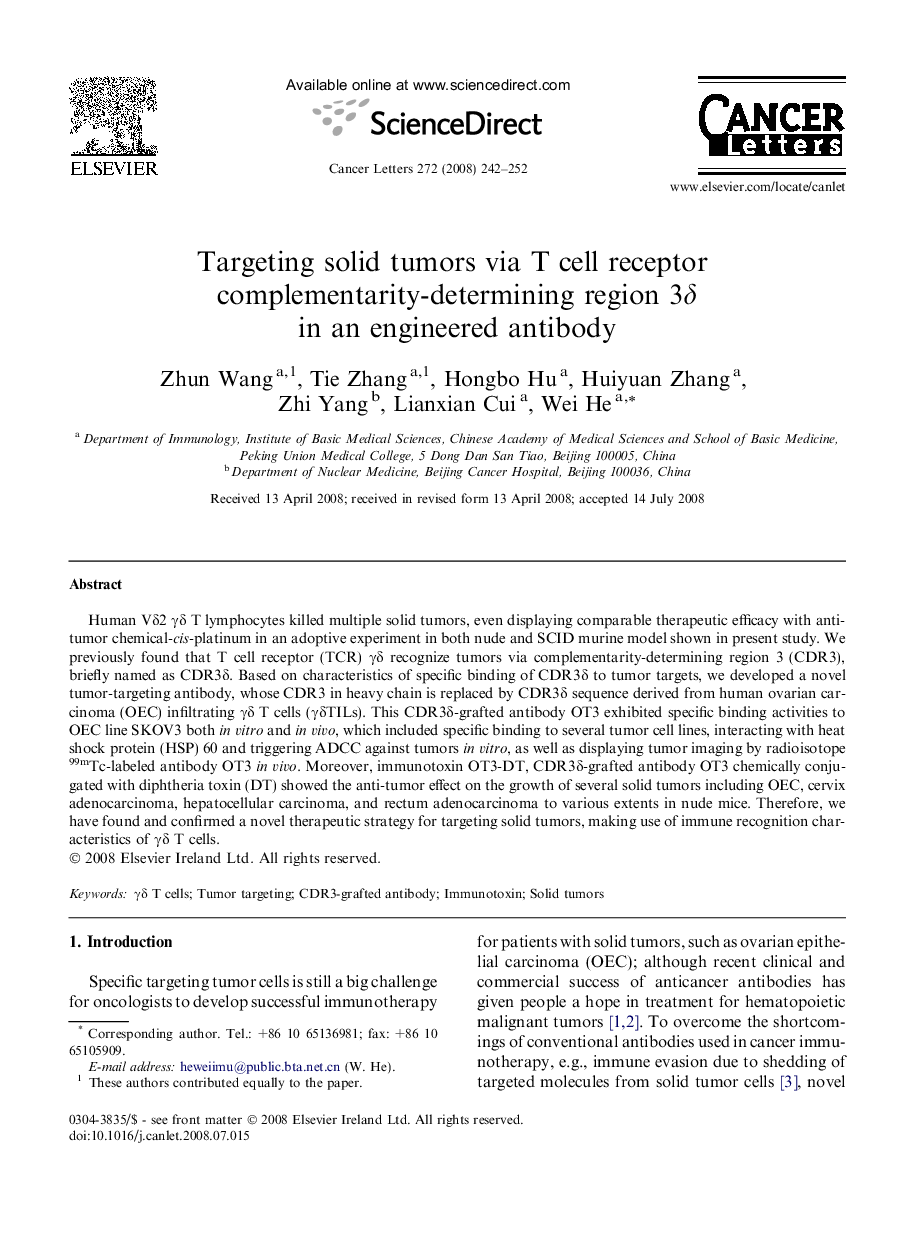| Article ID | Journal | Published Year | Pages | File Type |
|---|---|---|---|---|
| 2114704 | Cancer Letters | 2008 | 11 Pages |
Human Vδ2 γδ T lymphocytes killed multiple solid tumors, even displaying comparable therapeutic efficacy with anti-tumor chemical-cis-platinum in an adoptive experiment in both nude and SCID murine model shown in present study. We previously found that T cell receptor (TCR) γδ recognize tumors via complementarity-determining region 3 (CDR3), briefly named as CDR3δ. Based on characteristics of specific binding of CDR3δ to tumor targets, we developed a novel tumor-targeting antibody, whose CDR3 in heavy chain is replaced by CDR3δ sequence derived from human ovarian carcinoma (OEC) infiltrating γδ T cells (γδTILs). This CDR3δ-grafted antibody OT3 exhibited specific binding activities to OEC line SKOV3 both in vitro and in vivo, which included specific binding to several tumor cell lines, interacting with heat shock protein (HSP) 60 and triggering ADCC against tumors in vitro, as well as displaying tumor imaging by radioisotope 99mTc-labeled antibody OT3 in vivo. Moreover, immunotoxin OT3-DT, CDR3δ-grafted antibody OT3 chemically conjugated with diphtheria toxin (DT) showed the anti-tumor effect on the growth of several solid tumors including OEC, cervix adenocarcinoma, hepatocellular carcinoma, and rectum adenocarcinoma to various extents in nude mice. Therefore, we have found and confirmed a novel therapeutic strategy for targeting solid tumors, making use of immune recognition characteristics of γδ T cells.
